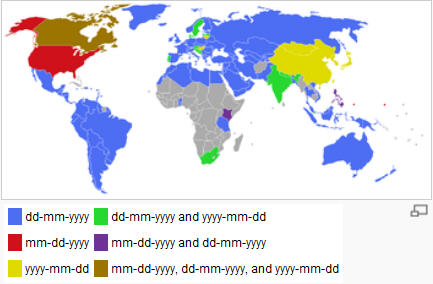When selling products internationally, it’s critical to be aware of the slight differences between regions. In a previous post, we examined the differences between U.S. sales tax and E.U. VAT presentation. Similarly, date formatting is one of the most common, yet easily solved mistakes made when companies have their virtual passports stamped to sell globally.
In the U.S., the month is typically displayed before the day when writing (MM/DD/YYYY). If you are using a U.S. computer, look at the format of the date display and you will see a date such as 9/15/2010. Clearly there aren’t 15 months in a year so it’s rather obvious that the month is first, day second and year third. However, Europeans will likely see the reverse with 15/9/2010 (DD/MM/YYYY) in the display.
This may seem innocuous enough, but what happens when you have a date such as 3/9/2010? Look at the following example of software maker Whitesmoke:

This capture was made on August 31, so what they likely meant as the Offer ends date was September 3, but to a U.S. viewer, this looks like March 9, 2010! Is this offer already expired? Don’t make your customers stumble over such trivial details.
Similarly, in Japan, the date is written with the year first, then month, then day. This adds additional complexity when selling into Japan. Here’s a screen shot of the Amazon software store with only the numbers shown. Luckily, 99.7% of all Japanese citizens are Japanese, or else there could be confusion in how Amazon is handling the date.

Wikipedia has a list of all the countries and common practices in those local countries. Check it out and use these guidelines for date formatting.

In Western countries there is a simple solution to smooth the rough edges when it comes to date formatting. If you always spell out at least part of the month field with letters, no one will get the wrong idea.
We recommend the following formats:
- 3rd September 2010
- Sept 3rd, 2010
- Sept 3, 2010
- 3 Sep 2010
Of course, you must handle Asian countries differently. Be sure your marketing and ecommerce platforms supports all of the local nuances to prevent marketing campaigns from underachieving!
Keystone
Attention to detail is extremely important when selling internationally. Spell out some part of the month field whenever including a date online because you never know where your customer is coming from.
Do you have any other examples where you’ve been confused when buying online? Often times, companies aren’t even aware that they are losing sales! Tell us your stories in the comment section.